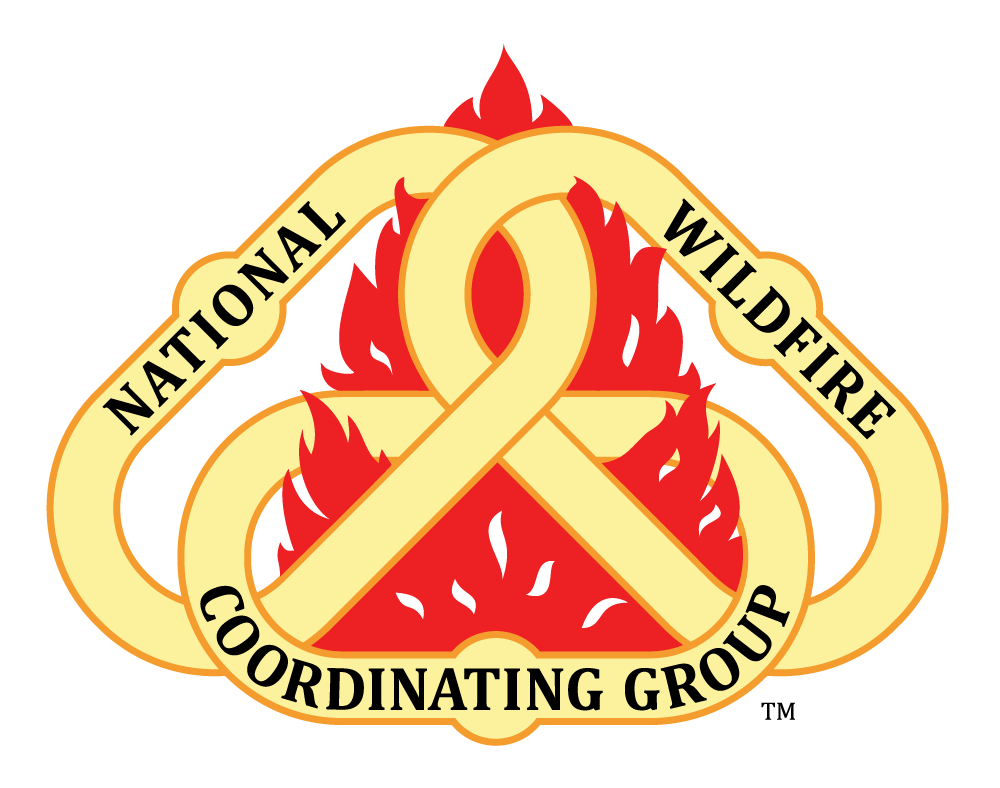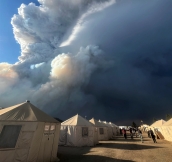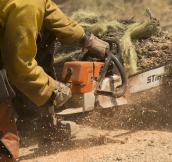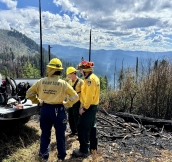
Tire Information and Inspection
Intent
Firefighters are exposed to risk while driving on a constant basis. By becoming knowledgeable about your vehicle, its maintenance, and proper use of its components; you can increase your effectiveness on the fireline and decrease your risk while driving.
Facilitator Preparation
- Review the video and module tools and choose the most relevant videos to your group.
- Consider additional activities and discussion questions relevant to the location and agency.
- Browse the Lessons Learned Center for information learned from vehicle incidents.
Facilitating the Discussion
- Share the intent of the module with the class.
- Show the video.
- Facilitate a small or large group discussion using discussion questions.
Discussion Questions
- What are the most common hazards when driving (e.g., poor visibility, cumulative fatigue, wash-boarded roads, vehicle maintenance)?
- How does your module manage these risks?
- How do these risks differ during night operations?
- Reference the Risk Management Process in the NWCG Incident Response Pocket Guide (IRPG), PMS 461. Discuss how this process applies to driving (e.g., Identify Hazards (situational awareness), Assess Hazards, Develop Controls and Make Risk Decisions, Implement Controls, Supervise and evaluate).
- Discuss as a group one of the following scenarios and how you would apply the risk management process:
- Caravanning through a highly populated city during rush hour.
- Traversing steep, loose soil while navigating to specific drop point.
- Ingress & egress during Wildland Urban Interface (WUI) operations.
- Discuss as a group one of the following scenarios and how you would apply the risk management process:
- What preventative maintenance oversights lead to vehicle malfunctions and accidents (e.g., tire failures, hubs locked in at high speeds, pump failure)?
- Discuss what components of your vehicle must be inspected regularly (e.g., engine oil, tire pressure, windshield wiper fluid, power steering fluid).
- How does your module track vehicle maintenance and inspections?
- How do you check for equipment safety issues and recalls? How often?
- What resources do you use answer questions about your vehicle?
- What vehicle processes should everyone on your module be familiar with (e.g., how to move specific module vehicles in an emergency, how to start the engine pump)?
- Determine an opportunity for crew members to practice this skill.
- Compare and contrast driving hazards during fire operations and driving to the incident (e.g., high speed travel vs. low range, 2-1 rest ratio considerations, fatigue).
- What is the specific process of engaging and disengaging four-wheel drive in the specific vehicles that you will be operating on your module?
- When should you engage the four-wheel drive?
- Should you take additional risks or assignments because your vehicle does have four-wheel drive (why or why not)?
- Discuss the specific order of operations in starting and stopping the engine’s water pump.
- Do all crew members know how to operate the engine pump? How could you cross-train to ensure all crew members understand how to maintain the engine pump (e.g., preventative maintenance, pressure tests, winterization)?
- Do adjacent resources at your district know how to operate the engine pump in case of emergency?
- The US DOT estimates that there were 42,915 vehicle fatalities in 2021. How do you integrate facets of defensive driving and preventative maintenance into the personal vehicle you use to commute to and from work?
General Resources
- Website: Wildland Fire Lessons Learned Center
- Website: Wildland Fire Lessons Learned Blog
Tire Inspection Module Resources
- Website: NHTSA.GOV - Tires FAQ
Hub Locking, 4WD Resources
- Document: Check Your Owner’s Manual
Engine Regeneration Resources
- Document: Regen Equipment Bulletin: How To
- Document: Regen Equipment Bulletin: Tips
- Document: Check Your Owner’s Manual
Resources to Check for Recalls
- Go to NHTSA.GOV-Subscriptions to sign up for recall information emails for your vehicle.
- Call The National Highway Traffic Safety Administration (NHTSA) Vehicle Safety Hotline at 1-888-327-4236 (TTY 1-800-424-9153) for recall information.
- Call the manufacturer service center and ask them to check the vin for outstanding recalls.
- When you take your module’s vehicle to the dealership have the manufacturer's service center check the vehicle identification number (VIN) for outstanding recalls.
- Website: GSA.GOV-GOV RECALLS
- Website: NHTSA.GOV - SAFETY ISSUES & RECALLS
Additional Video Information
- This video is also available as a download (ZIP file, Size 360MB) with the .srt file for closed captioning (you may need to right click and Save As). For information on how to add closed captioning to a video, see this how to page.
- Note: For Chrome and Firefox, right click the word download and select Save Link As; for IE, right click and select Save Target As.





